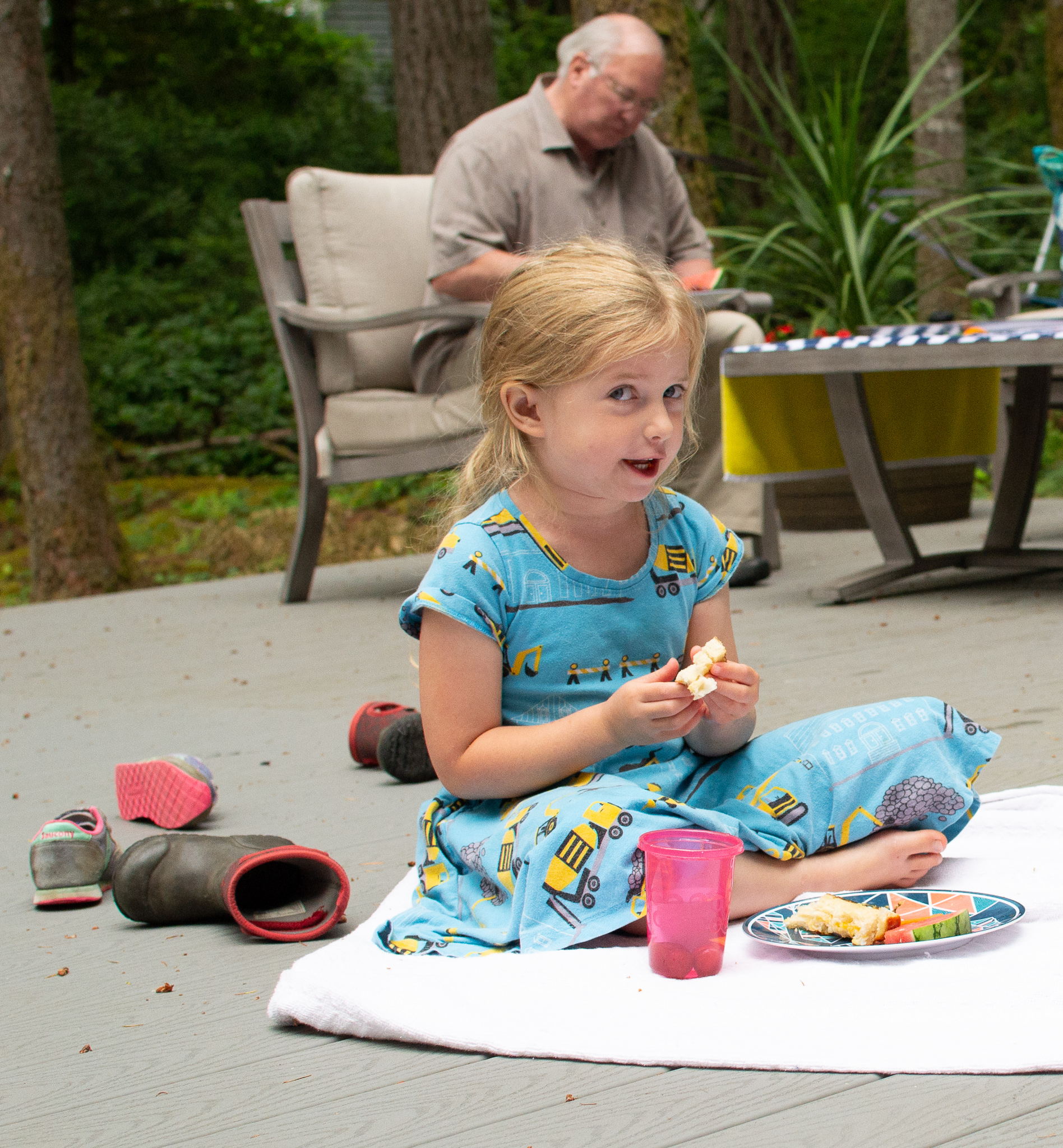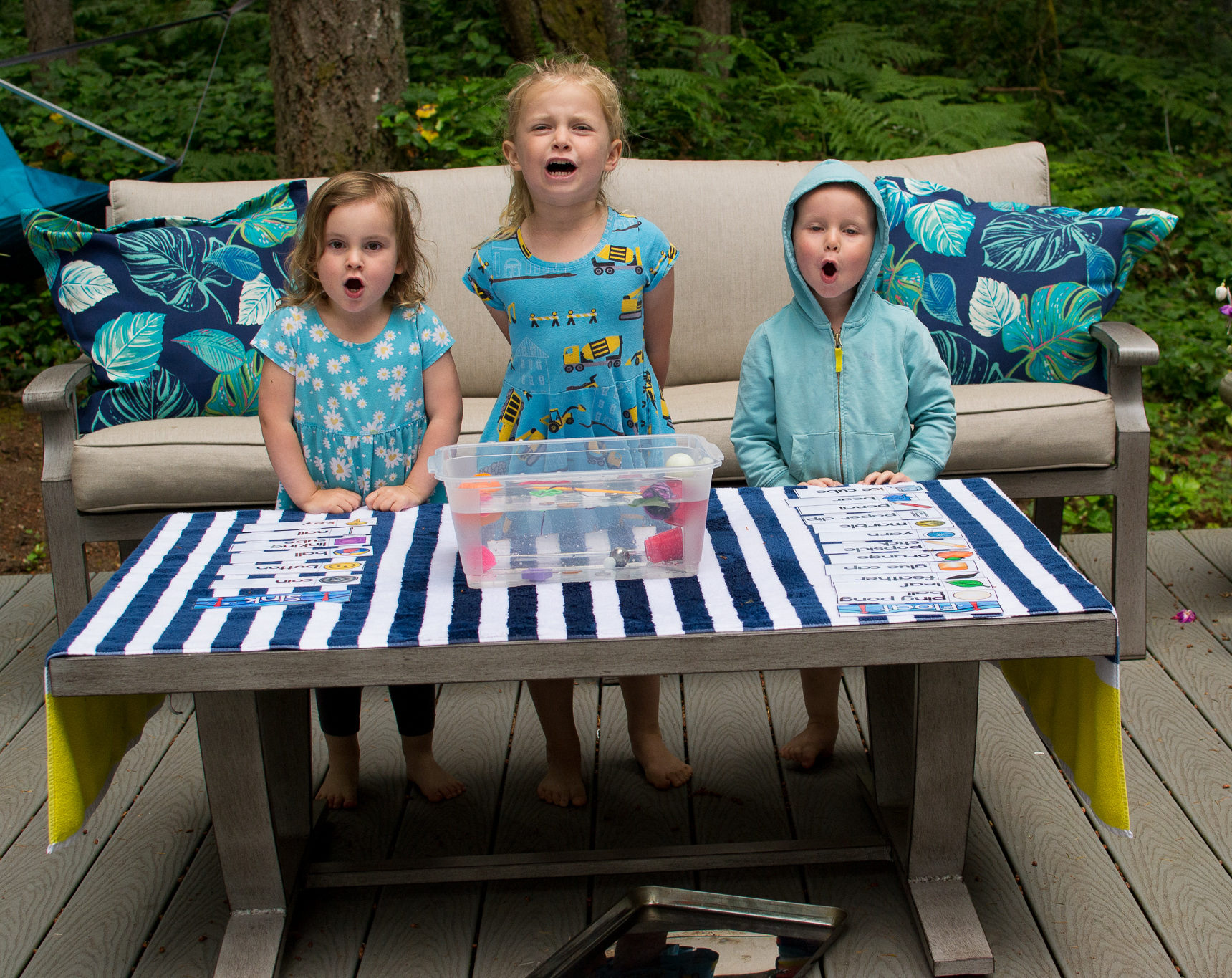All smart science students — even the small ones — follow the scientific method.
The scientific method, you will recall from your fifth grade teacher (mine was Mrs. Powell), involves observation first: “Look! What did Oma put on the cookie sheet?”
Next, a question: Oma! What are we going to do with that bin of water? Can we eat the orange?
After that, a hypothesis: Moses, can you find the key? Will the key float or sink?
Without hesitation — “No float! Seenk!”
Then, you have to test your hypothesis: Drop the thing from the cookie sheet into the water bin.
Yep. It definitely seenks. Sinks.
Before drawing a conclusion, though, smart, little scientists continue to test, test, test… always aware that they could be wrong. In fact, they were on occasion — plastic Dixie cups sink after they fill with water. Pompoms initially float, but not for long. Plastic bear-shaped cookie cutters sink as fast as steel balls do. How about that?
Scientists –smart ones, anyway — know the dangers of extrapolation. So, instead of assuming grapes will float because oranges did (both are fruit?), our small scientists gleefully retested their hypotheses at lunchtime.
Yep, those are grapes and they SINK. Bread crust from grilled-cheese sandwiches does, also. (In the interest of science and the absence of mommies, who may not allow “retesting” at home, Oma and Opa condoned this behavior.)
All three future scientists agree that not only were their conclusions consistent with the data, floating and sinking is great fun.
Can you say “sink”?







